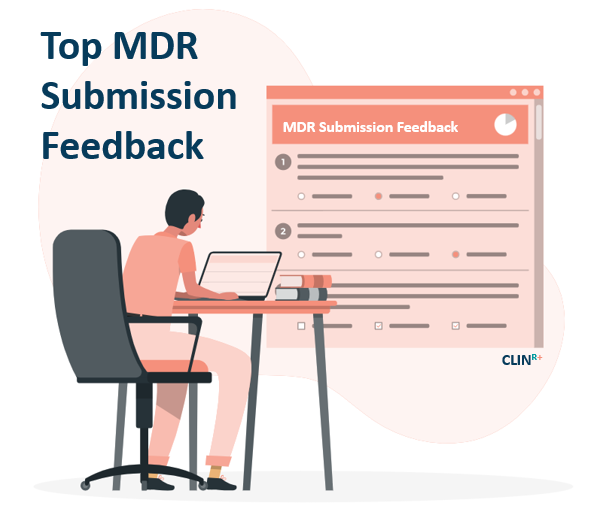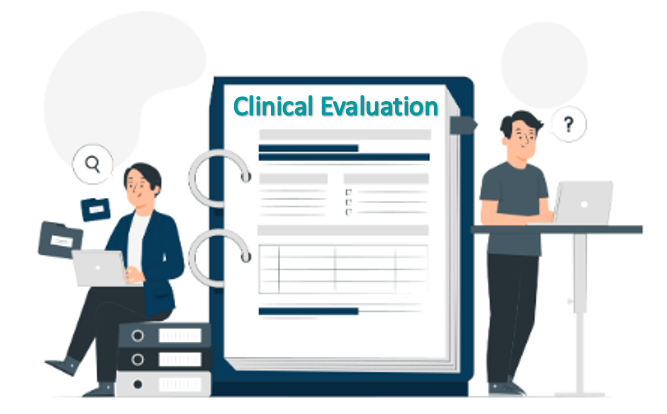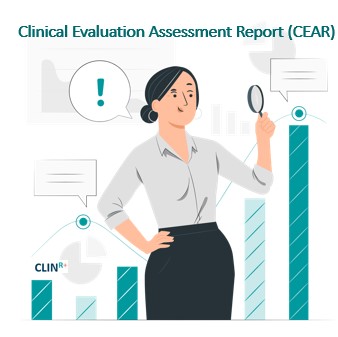Clinical Evaluation FAQ

Q: What is Clinical Evaluation?
A: Clinical evaluation is a methodologically sound ongoing procedure that collects, appraises, and evaluates clinical evidence to confirm a medical device’s compliance with safety and performance requirements outlined in the manufacturer’s Instructions for Use. It demonstrates the device’s safety and performance and is applicable to all classes of medical devices.
Q: What are the stages of Clinical Evaluation?
A: The 5 stages of clinical evaluation, as per MEDDEV 2.7/1 Rev 4, are as follows:
- Stage 0: Defining the scope and planning the evaluation.
- Stage 1: Identification of pertinent data.
- Stage 2: Appraisal of the pertinent data.
- Stage 3: Analysis of the clinical data.
- Stage 4: Finalizing the Clinical Evaluation Report (CER).
Q: What happens in Stage 0 of Clinical Evaluation?
A: Stage 0 involves defining the scope of the clinical evaluation and planning each step. It requires creating a documented Clinical Evaluation Plan (CEP) that outlines the clinical strategy and scope of the evaluation. The CEP considers the device’s type, history, and clinical data requirements.
Q: What is Stage 1 of Clinical Evaluation?
A: Stage 1 focuses on the identification of pertinent data for the clinical evaluation. It involves gathering clinical data from various sources, including preclinical studies, clinical studies, and clinical literature. A literature search protocol is used to define the methodology for searching and selecting relevant literature.
Q: What is Stage 2 of Clinical Evaluation?
A: Stage 2 involves the appraisal of the collected data. Each data set is assessed for its scientific validity, relevance, and weighting. The appraisal process evaluates the quality and validity of the data and weighs its contribution to the clinical evaluation. Transparent appraisals should include all high-quality data, whether positive or negative.
Q: What happens in Stage 3 of Clinical Evaluation?
A: Stage 3 focuses on the analysis of the clinical data to determine conformity with safety and performance requirements. The data is analysed to ensure that the device is designed and manufactured to ensure patient and user safety. It should also meet the “state of the art” in the relevant field. The analysis considers the benefit/risk profile, identifies any residual risks, and may determine post-market clinical follow-up needs.
Q: What is Stage 4 of Clinical Evaluation?
A: Stage 4 concludes the clinical evaluation process by finalizing the Clinical Evaluation Report (CER). The CER documents each phase of the evaluation and assesses the device’s safety and performance. The report includes a summary, scope of the evaluation, clinical background, device information, conclusions, and the next clinical evaluation date.
Q: What are some key considerations for Clinical Evaluation?
A: Key considerations for Clinical Evaluation include ensuring that evaluators are qualified, having a well-defined Clinical Evaluation Plan (CEP), conducting comprehensive literature searches, ensuring sufficient clinical evidence, stating conformity to relevant requirements, and having plans for Post Market Surveillance (PMS) and Post Market Follow-Up (PMCF).
Q: Why is a Clinical Evaluation Report (CER) important under the EU MDR?
A: The CER is a crucial document required for medical device submissions under EU MDR. It involves assessing and analysing all clinical evidence related to the device, objectively analysing clinical background data, and comparing alternative devices. Due to its comprehensive nature, structuring the CER effectively is essential for its success.
Q: What are some useful resources for writing a Clinical Evaluation Report (CER)?
A: Some useful resources for writing a CER include:
- The EU Medical Device Regulation (MDR) itself, which outlines the core rules and expectations for Clinical Evaluation.
- MEDDEV 2.7/1 rev 4, a comprehensive guide for performing Clinical Evaluation under the MDD (although it does not reflect the MDR changes).
- MDCG (Medical Device Coordination Group) guidelines, such as MDCG 2020-13, which provides a template for a Clinical Evaluation Assessment Report.
- Other MDCG guidelines that are relevant to your device, such as MDCG 2020-6 for legacy devices or MDCG 2020-5 for making equivalence claims.
- Experienced CER medical writers or outsourcing services like CLIN-r+ for expertise in composing and maintaining the Clinical Evaluation workflow.
Q: What are the MDR and MEDDEV 2.7/1 rev 4 have for writing a CER?
A: The MDR outlines core rules and expectations for Clinical Evaluation, while MEDDEV 2.7/1 rev 4 offers comprehensive guidance on performing Clinical Evaluation, despite being outdated. Both documents serve as foundational resources for understanding and structuring a CER.
Q: How does MDCG 2020-13 contribute to the writing of a CER?
A: MDCG 2020-13 provides a template for a Clinical Evaluation Assessment Report, serving as a valuable resource for structuring and organizing the CER. It also offers guidance on various aspects of medical device regulatory activities, enhancing the quality and compliance of the report.
Q: Why is it important to structure a Clinical Evaluation Report (CER) properly?
A: Structuring a CER properly is important to ensure clarity and organization throughout the document. CERs can be lengthy and complex, reaching hundreds of pages, so a clear structure helps readers navigate individual sections and understand the content better. It also contributes to the document’s overall success and compliance with regulatory requirements.
Q: Who should write your CER?
A: Composing a CER can be daunting. It should be written by your in-house Medical Affairs team. Alternatively, it can be outsourced to experienced medical writers. It is crucial to ensure the writer has expertise in navigating the complexity of the report, maintaining compliance with regulatory requirements, and effectively communicating the device’s clinical evidence.
Q: How can you ensure a successful CER for EU MDR?
A: It is recommended to start planning the EU MDR transition early and review the state of any existing MDD CER. You could consider partnering with a Clinical Regulatory agency can provide valuable insights and expedite the process. Additionally, investing in EU MDR Technical Document templates and ensuring the CER meets all requirements are advisable steps for success.
Want to learn more? Have a look at our Clinical Evaluation and Clinical Evaluation Report whitepapers or get in touch!






